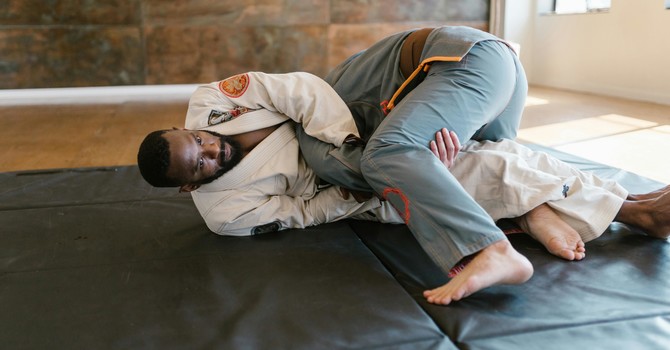
San Diego FC (SDFC) is making waves in Major League Soccer (MLS), bringing excitement and passion to fans in Southern California. As the team strives for success on the field, keeping players in peak physical condition is crucial—especially when injuries occur. Injuries are an unfortunate part of any sport, but the key to bouncing back lies in effective rehabilitation. That’s where physical therapy (PT) plays a critical role.
We’re going to take a look at some of SDFC's current injured players, explore how PT aids in their recovery in order to understand the significance of injury prevention in professional soccer.
Recent Injuries at SDFC
1. Hirving “Chucky” Lozano – Forward (Hamstring Injury)
Lozano suffered a hamstring injury in early March and has been sidelined since. Though described as minor, he's missed multiple matches.
How PT Helps: Targeted hamstring therapy improves flexibility and strength, while gradual return-to-play programs reduce re-injury risk.
2. Marcus Ingvartsen – Forward (Lower Body Injury)
Ingvartsen is out indefinitely with a lower body injury sustained in mid-March. He is expected to be sidelined for 10-12 weeks with no confirmed return date confirmed.
How PT Helps: While his injury diagnosis has not been publicly announced, Marcus will likely need extensive PT prior to returning to the pitch due to the long period of time recovering.
3. Andrés Reyes – Defender (Knee Injury)
Reyes has yet to debut for SDFC due to a pre-season knee injury. His recovery continues with no timeline yet announced.
How PT Helps: Knee rehab focuses on joint stability, muscle strengthening, and functional movement training to support defensive performance.
Common Soccer Injuries and Their Challenges
Soccer players frequently deal with high-impact, repetitive movements that lead to injuries such as:
- Knee injuries (e.g., ACL tears): Often require months of structured rehab, surgery, and progressive strengthening.
- Hamstring strains: A common issue due to sudden sprints and dynamic movement.
- Ankle and foot injuries: Frequently caused by sharp directional changes or tackles.
Rehabilitation from these injuries demands a strategic, hands-on approach—exactly what PT provides.
How Physical Therapy (PT) Can Help
Physical therapy is a crucial tool for SDFC’s injured players. PT is not just about getting players back on the field, it’s about ensuring that they can perform at their highest level without the risk of re-injury. Here's how physical therapy aids in the recovery process:
-
Injury Assessment and Diagnosis
A skilled physical therapist begins by evaluating the injury, pinpointing the source of pain or discomfort. This assessment helps determine the best course of action for recovery, whether it's through strengthening exercises, manual therapy, or other modalities.
-
Pain Management
Some physical therapists utilize techniques like cold therapy, heat therapy, and electrotherapy to manage pain and inflammation, however it is important to note that these may only help with short term relief and can also inhibit healing. When used correctly, these methods can help prevent more swelling and reduce pain. One of the most useful pain relief techniques, though, is movement. Moving the injured limb in a pain-free way can actually help to reduce pain as well. Isometric exercises, ones where you’re not moving your body but your muscles are working, can also relieve muscle pain.
-
Strength and Stability Training
Once the pain begins to subside, physical therapists work with athletes to strengthen the injured area. In the case of a hamstring strain, for example, therapists will design exercises that target the muscles around the hamstring to promote healing and restore strength, flexibility, and stability.
-
Mobility and Flexibility
Injured players often lose mobility and flexibility during the healing process. Physical therapists help improve range of motion through stretches, joint mobilizations, and soft tissue techniques. Whether it's an ankle sprain or a shoulder issue, restoring mobility is key to getting back to competitive play.
-
Prevention of Re-Injury
Physical therapy doesn’t stop once the player is cleared to return to play. A big part of PT is injury prevention. Physical therapists design specific programs to help players strengthen their bodies and avoid future injuries. For example, soccer players often benefit from exercises that improve their balance, agility, and core strength—areas critical to avoiding injuries during high-intensity moments in a game.
-
Return-to-Play Protocols
Once an athlete is nearing the end of their rehab, physical therapists help create a return-to-play plan. This involves carefully monitored exercises that mimic the movements of soccer, ensuring the player can handle the physical demands of a match. Gradually increasing intensity ensures the player isn’t pushed too hard, reducing the risk of a setback.
Conclusion: The Power of PT in SDFC's Success
Injury recovery isn’t just about getting healthy again; it’s about rebuilding even stronger than before. With the help of physical therapy, SDFC players can recover from injuries more effectively and stay healthy throughout the season. PT is a crucial part of an athlete's journey—not only for healing but for preventing future injuries and ensuring peak performance.
As SDFC continues to make its mark in MLS, fans can take comfort in knowing that physical therapy plays a major role in keeping the team at its best. For players and fans alike, it's clear that the power of PT extends beyond recovery—it helps drive success on the pitch.
If you’re interested in learning more about injury recovery and the role of physical therapy in soccer, reach out to Valor Physical Therapy. The right support can make all the difference!

Valentine Ngo
Contact Me



